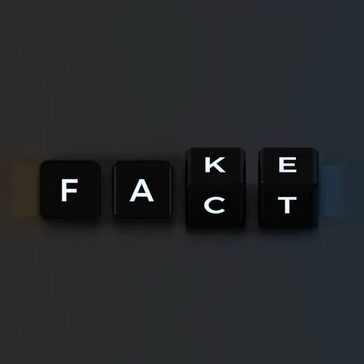In today’s digital whirlwind, falsehoods spread faster than cat videos. You might think “misinformation” and “disinformation” are interchangeable, but linguists and conspiracy theorists alike would beg to differ. And yes, the coincidence that “misinformation” sounds exactly like “Miss Information” isn’t lost on anyone who’s ever received a suspiciously persuasive email from an unknown aunt.
Misinformation is the well-meaning friend who proudly forwards you a “shocking statistic” about coffee curing every disease under the sun. It’s false or inaccurate data shared without any intent to mislead, like a miscaptioned photo of Mt. Fuji that suddenly becomes “proof” that Japan invented hoverboards in 1823. Misinformation thrives on ignorance, not malice. It spreads because people believe it, not because someone plotted it.
Disinformation, by contrast, is the sneering villain who fabricates stories designed to confuse, manipulate, or divide. It takes intentional effort, research, scripts, even entire factories of fake social media accounts. Remember the “miracle cure” ads that flooded your feed last year, or the anonymous tweets suggesting a rival candidate was secretly an alien? That was disinformation, weaponized falsehood crafted to accomplish a goal. It moves like propaganda, poisoning public discourse and eroding trust in institutions.
Both misinformation and disinformation ride the same digital currents, but their engines differ. Misinformation is powered by human error, by hasty retweets and unchecked assumptions. Disinformation is powered by strategy, backed by agendas – political, financial, ideological. The first is an accident, the second an ambush.
In Japanese philosophy, we might look to Kaizen to counteract these tides. Kaizen urges continuous improvement through small, consistent steps. In the context of information, it means cultivating habits of fact checking, pausing before hitting “share,” and refining our news diets bit by bit. A single corrected rumor may seem insignificant, but over time, a community that practices Kaizen can transform its information environment from a swamp of half-truths into a flowing stream of clarity.
We can also borrow the spirit of Wabi-Sabi, the appreciation of imperfection. Rather than demanding an impossible absolute truth, Wabi-Sabi teaches us to value nuance and context. A broken cookie still tastes sweet, and an imperfect report still holds kernels of fact. By accepting that our sources may never be flawless and remaining open to updates, we reduce the shock when corrections arrive.
That said, dealing with deliberate falsehoods calls for Mushin, a mind free of distraction. Mushin in martial arts is the state of no-mind, responding instinctively without hesitation. In the arena of disinformation, Mushin means maintaining a calm, detached frame of mind. It prevents panic sharing and helps us scrutinize sensational claims for the manipulative threads woven inside.
Oubaitori, the doctrine of non-comparison, offers another insight. It reminds us not to measure one fact against another but to assess each on its own merit. Too often we dismiss corrections because they come from “the other side,” the political enemy or the rival brand. Oubaitori encourages us to evaluate evidence rather than sources, to honor truth wherever it appears.
Opportunities to reclaim our information landscape can feel rarer than a once-in-a-thousand-lifetimes miracle. In Japan there is a proverb, Senzai-Ichigu, pointing to extraordinary chances. Spotting a false narrative and turning it around before it goes viral can feel like one of those rare moments. Yet only by embracing Senzai-Ichigu do we seize those precious openings to correct, clarify, and educate.
In the corporate world, misinformation and disinformation become even more treacherous. A single errant memo can spark panic, tank a stock price, or derail an entire campaign. Business leaders must become information samurai, wielding clear communication protocols and rapid response plans in the face of rumor wars. Just as samurai lords like Yūki Masakatsu codified rules to tame unruly retainers, modern managers must codify truth-checking procedures to tame the spread of falsehoods within their organizations.
Fighting disinformation on a societal scale requires teamwork. Governments, tech platforms, educators, and everyday citizens must collaborate in a continuous Kaizen of policy, design, and personal practice. We need robust media-literacy curriculum in schools, transparent algorithms on social platforms, and accessible fact-checking tools that anyone can wield without a PhD in logic.
Ultimately, misinformation and disinformation are two sides of the same deceptive coin. One is tossed by accident, the other flipped on purpose. Both erode our collective trust and strain the bonds – Kizuna, that hold our communities together. Facing this challenge calls for a blend of Japanese philosophies: Kaizen to improve bit by bit, Wabi-Sabi to embrace imperfection, Mushin to maintain clarity of mind, Oubaitori to evaluate each claim on its own grounds, and Senzai-Ichigu to seize those rare moments when the tide turns.
So the next time you encounter a viral headline that sounds too good or too horrifying to be true, remember Miss Information and Mr Disinformation are both waiting in the wings. Pause, probe, and perhaps most importantly, share only what you would stake your reputation on. In doing so, you help ensure that tomorrow’s digital seas are less stormy, more transparent, and rich with enduring truths.
Author’s note:
Yes, I know I wrote Miss Information as if she was a real person that sounds like she’d be great at tea parties, but trust me, you don’t want to uninvite her.
No, I’m not secretly funded by a global fact-checking consortium. But I did accept a coffee and company from Mr Disinformation.


Leave a Reply